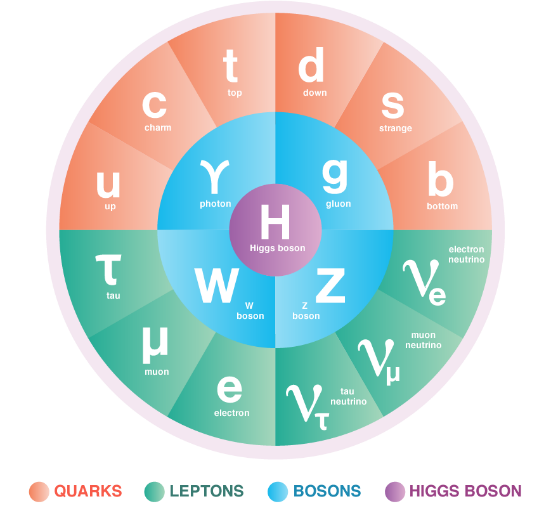Apr 08 2021
Possible New Force
 Physicists are all verklempt. Prof Ben Allanach, from Cambridge University said:
Physicists are all verklempt. Prof Ben Allanach, from Cambridge University said:
“This is the moment that I have been waiting for and I’m not getting a lot of sleep because I’m too excited.”
What could have scientists so excited? A muon that wobbled a little faster than it’s supposed to. In an experiment at the Fermi National Accelerator Laboratory (Fermilab) in Batavia, Illinois (the Muon g-2 experiment), physicists accelerated the subatomic particle muons and exposed them to a magnetic field. Muons are like electrons but 200 times heavier. They have a charge so should respond to a magnetic field by wobbling as they swing around the accelerator, and they did, but they did it a little faster than the standard model predicts they should. It was as if a force not contained within the standard model was acting on them. This experiment adds to another in Japan and yet another at the LHC also hinting at new physics. The statistical power of the Fermi results is at 4.1 sigma, or a 1 in 40,000 probability of being by chance alone. Five sigma (one chance in 3.5 million) is the threshold when the physics community accepts a claim as proven.
This is a big deal, perhaps even bigger than when the LHC confirmed the existence of the Higgs boson. That confirmed a prediction of the standard model, which is nice, but does not point the way to new physics. What physicists desperately want to do is break the standard model, to find some provable phenomenon that violates the standard model, which should lead to the discovery of a new particle or perhaps even a new force outside the current model. This is what would create the next great discovery in physics and perhaps solve some enduring mysteries, like what the hell is responsible for the acceleration of the expansion of the universe?
The standard model is a system that includes all known particles and forces, and describes how they interact with each other and the rules of their behavior. It includes, for example, subatomic particles like quarks, how they combine in triplets to form particles like neutrons and protons, and how that determines the properties of those particles such as charge. The standard model also includes the four fundamental forces – gravity (which relates to mass), electromagnetism, and the strong and weak nuclear forces. Physicists have also unified (described as one underlying phenomenon) the weak force and electromagnetism into the electroweak force, and hope to unify the rest.
The standard model currently includes four types of particles – quarks and leptons, which are matter particles, bosons, which are force carriers, and the Higgs boson, which relates to mass. It’s a neat diagram of reality that organizes and helps inform our understanding of the fundamental building blocks of the universe. It is to physics what the Periodic Table of the Elements is to chemistry. If the current standard model is all that there was in the universe, meaning that it was a complete and total description of the fundamental particles and forces of reality, then it should be able to explain pretty much everything. But it can’t, so it must be an incomplete picture. For this reasons physicists have been trying to break the standard model for decades, but it is stubbornly robust. In fact some physicists were hoping the LHC experiments would not confirm the Higgs Boson, because that would break the standard model and point in the direction of new physics to discover.
So have we finally done it? A sigma of 4.1 is impressive, but conservative physicists are going to wait until we hit 5 sigma to pop their champagne corks.
The LHC experiment was different than the Fermi experiment. They were looking at the decay of short-lived particles called beauty quarks. According to the standard model beauty quarks should decay into electrons or muons at an equal rate, but instead produced an excess of electrons. This could mean the existence of a new particle, which some are calling the leptoquark, while others think might be a Z-prime boson. (But again, not yet at 5 sigma).
Theoretical physicists are now trying to work out what the new particle and/or force might be that could explain these apparent anomalous results. This would then make predictions about how other particles might behave in other experiments, and hopefully eventually we can expand the standard model with new additions. Hopefully existing colliders are powerful enough to do the requisite experiments. If not, we may need to build even bigger ones.
Our verklempt Prof Allanach, in his theoretical models, has proposed possible names for the new force – the “flavour force”, the “third family hyperforce” and the “B minus L2”.
If any of this pans out it will be profound, the most exciting discovery in particle physics in decades, perhaps even eclipsing the confirmation of the Higgs. But physicists are being careful, and trying not to get too excited. A lot of experts are saying, however, that this discovery seems like the real thing.






